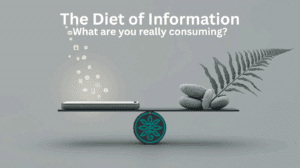In our hyper-connected world, being “always available” has become a badge of honor. Whether it’s responding to work emails at midnight or being perpetually on-call for family and friends, many of us have internalized the belief that accessibility equals reliability, commitment, and care.
But what if this belief is actually undermining our effectiveness and wellbeing?
The Origins of Always-On Culture
The belief that we must be constantly available stems from multiple sources in our modern world. Professional environments increasingly blur work-life boundaries, while family dynamics often model self-sacrifice as the ultimate expression of love. Digital culture has normalized instant responses, creating an expectation of perpetual connectivity.
Underlying all of this is a deep-seated fear of missing opportunities or letting others down.
This conditioning is so deeply ingrained that many of us never question it. We accept the exhaustion, stress, and overwhelm as necessary sacrifices for success or good relationships.
The Multi-Dimensional Impact
When we examine the belief “I must be available to others at all times” through the lens of impact, we discover its far-reaching consequences across every aspect of our lives.
The physical impact manifests in our bodies, which bear the burden of constant availability. Many people experience disrupted sleep patterns, chronic tension, and persistent pain. Digestive issues become common as stress hormones remain elevated, and our immune systems weaken under the constant strain of alertness.
Emotionally, the toll is equally significant. Persistent anxiety about missing messages becomes our constant companion, while guilt emerges whenever we attempt to set boundaries. Resentment builds toward the endless demands, yet we struggle to break free from them. Over time, our sense of personal agency diminishes, leading to emotional exhaustion.
In our relationships, contrary to strengthening connections, constant availability often creates unsustainable expectations. We unknowingly enable codependent patterns and teach others to disrespect our boundaries. The quality of our interactions suffers as we remain perpetually distracted by the next potential demand on our attention.
Professionally, being always available creates a cascade of negative effects. Our productivity suffers from constant interruptions, while our decision-making quality deteriorates. The space needed for creative thinking and innovation vanishes, replaced by reactive responses to immediate demands. Teams begin to rely on this constant accessibility, creating unsustainable expectations that accelerate burnout.
The Paradox of Availability
Here’s the irony: being constantly available often makes us less effective in the roles we’re trying to excel in. When we’re perpetually accessible, we operate in a reactive mode rather than a strategic one. We sacrifice the deep work, rest, and reflection necessary for meaningful contribution and genuine connection.
Consider a leader who prides themselves on being available to their team 24/7. While the intention might be to support their team, this approach creates dependency rather than empowerment. It models unhealthy work habits and prevents team members from developing crucial problem-solving skills. The quality of leadership decisions inevitably suffers under the weight of exhaustion.
Recalibrating the Belief
Transforming this belief doesn’t mean becoming unavailable or uncaring. Instead, it means defining meaningful availability by identifying when your presence truly matters and creating clear boundaries for different relationships. It requires building sustainable systems through established communication protocols and backup plans for genuine emergencies.
The focus shifts to quality over quantity. This means prioritizing focused, present engagement over constant partial attention. It means creating space for deep work and recovery, and nurturing relationships through intentional connection rather than constant accessibility.
The Path Forward
Changing deeply ingrained beliefs about availability requires courage and consistency. Begin by examining whose voice originally taught you this belief and whether that authority still serves your current reality. Create small experiments with boundaries and notice the positive impacts of selective availability. Build support systems that reinforce healthier patterns of engagement.
Remember, the goal isn’t to become unavailable but to be intentionally accessible in ways that serve both others and ourselves. True reliability comes not from constant availability but from sustainable presence and consistent well-being.
As you recalibrate this belief, you might discover that being less available actually allows you to be more present, effective, and genuinely supportive in the moments that matter most.
The key lies not in the quantity of your availability but in the quality of your engagement when you choose to be present.








